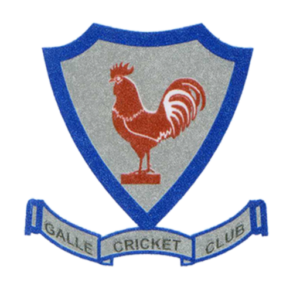About Us
A long period of one hundred and forty-seven years of existence of any institution is a justifiable pride to its members, past and present. So is it to the members of the Galle Cricket Club. Measured by human longevity it is roughly a life-span of more than two generations It is quite natural that during this long period, as in life, any institution should record its victories and defeats, as in Cricket, its own moments of glory and sadness and its times of downfall and resurrection. However, from the small beginnings as a venue for horse racing and cricket playing of British administrators, planters and military and Navy personal, it is today a prestigious world famous venue for International Test Cricket fixtures. It is in this pleasant atmosphere the members of the Galle Cricket Club are celebrating its 147th anniversary in 2023.
Galle Cricket Club has its recorded history from 1876 when Ceylon was under the Colonial administration of the British. History bears witness to the fact that at this time in England, parallel to the developments in industry and technology, there was also a progress in the skills of arts and crafts, literary interests and physical well-being disciplines. These progressive ideas did not take long to enter in to the thinking of our people. Horse racing and cricket playing became popular recreations among the European community and a small section of our society. During this period a temporary shed was put up for spectators at horse-racing meets. This was usually constructed of trunks of areacanut tress with a that ched cadjan roof and an extension of this with planks. Later, in 1892, a Grand-Stand was built. This was done on a proposal by Mr. P.A. Templer, Secretary, Galle Municipality. Now spectators were able to see the start of the races being done with the waving of a flag and a shot being fired into the air. Races were conducted during the Christmas Season. Horses like Romeo, Ace of Spades, Pretty Polly, Prince William, Orange Wiliam, Jingle, Jarney and Warrioro thrilled the spectators with their performances. Spectators and officials were accommodated in the Grand-Stand too.ln 1922,race meets for horses were conducted at Bossa and not on the Galle esplande anymore. The Grand-Stand was subsequently used as a cricket pavilion. At the beginning during their leisure, they divided themselves into two teams and played some “sort” of cricket. Soon this game got itself better organized into a more acceptable form, played according to the then standing rules of the game. The Galle Cricket Club records its birth from this time and its main idea was to popularize cricket as a disciplined and healthy game amoung youth of the area.
An essential need was a suitable playing field. The water course which gave protection to the then incompleted Dutch Fort, joined the sea at its Southern and western ends. During the British period, this sea water course was filled up and made into a grassy field for cricket playing and horse racing. At the further end of the ground was a stage which served the purpose of a grand-stand for the European Community as well as the well-to-do Ceylonese to witness the games and to enjoy the scenic beauty of the starry heavens and the rippling waters of the Indian Ocean.
